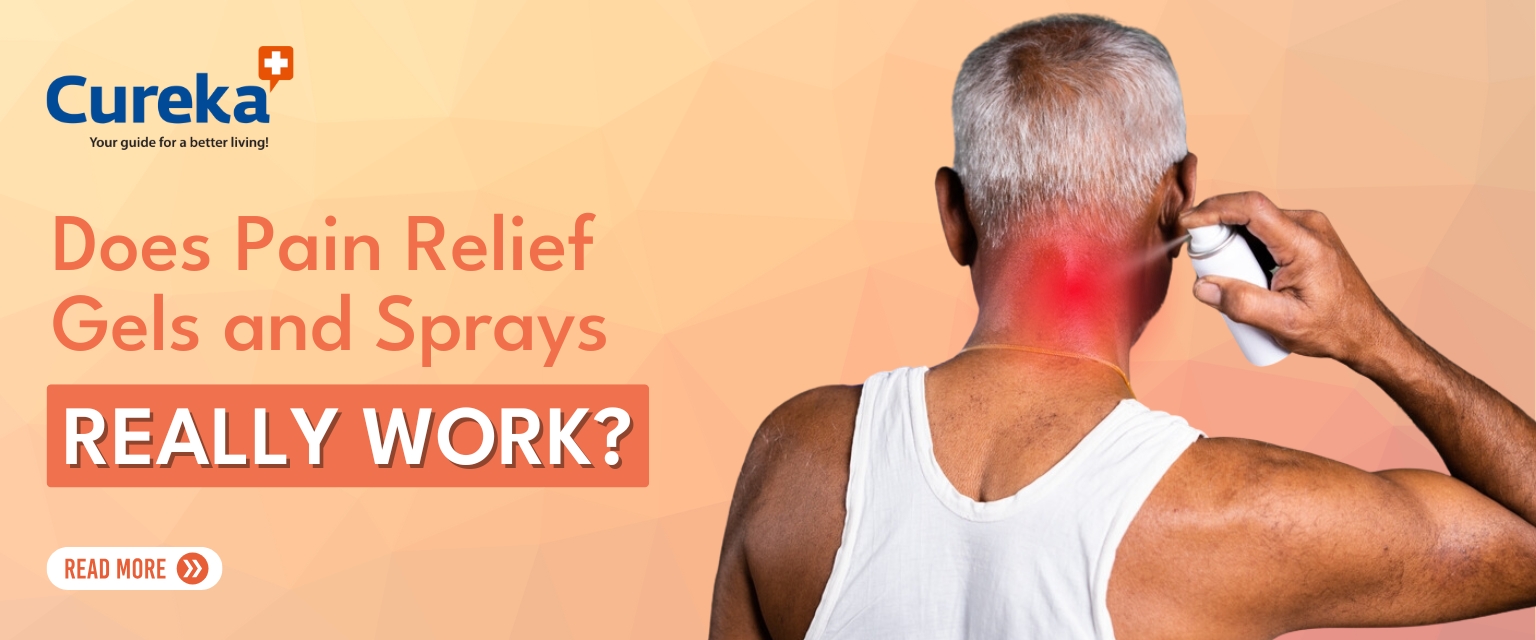Does Pain Relief Gels and Sprays Really Work ?
Pain can strike at any moment, whether it’s from a sports injury, a sprain, or the result of a sedentary lifestyle. Pain relief gels and sprays are popular solutions for addressing discomfort and inflammation, promising quick and effective results. But do these products actually work? Let’s explore their benefits, uses, and precautions to determine their efficacy.
What is a Pain Relief Gel?
A pain relief gel is a topical product applied directly to the skin. It contains active ingredients such as menthol, camphor, eucalyptus oil, and capsaicin, which provide cooling or heating sensations that help soothe the affected area. These gels work in two primary ways:
- Pain relief: By numbing the area, they block pain signals to the brain.
- Anti-inflammatory properties: They reduce inflammation in the muscles or joints, addressing the root cause of the pain.
Common Uses of Pain Relief Gel:
- Muscle sprains
- Joint discomfort
- Back pain
- Cramps and stiffness
Products like Deep Relief Gel are designed to penetrate deep into the tissues, offering long-lasting relief. These gels are also ideal for individuals with chronic pain or those recovering from sports injuries.
Why Choose Pain Relief Sprays?
How Pain Relief Sprays Work
Pain relief sprays, such as pain killer sprays or back pain sprays, are quick-action solutions for instant relief. With ingredients like Capsaicin and Methyl Salicylate, these sprays are effective against:
- Neck pain
- Shoulder pain
- Lower back pain
- Sprains and muscular aches
They work immediately upon spraying, creating a cooling sensation followed by a warming effect, which helps to alleviate pain and relax the muscles. The small, portable packaging makes them ideal for on-the-go use, whether you’re at work or on a sports field.
Benefits of Pain Relief Sprays
- Fast absorption: Works almost immediately upon contact with the skin.
- Convenience: Easy to carry and apply, making them a favorite among athletes and busy individuals.
- Versatility: Suitable for a wide range of pains, from gym-related injuries to everyday aches.
Osteoarthritis Pain Relief
For people with osteoarthritis, pain relief gels and sprays can help manage chronic joint pain. Topical NSAIDs like diclofenac and ketoprofen are commonly used to reduce pain in the hands, knees, and other affected joints. These topical medications are absorbed directly into the skin, reducing the systemic side effects commonly associated with oral painkillers.
Sports and Everyday Pain Management
Pain relief gels and sprays are particularly beneficial for athletes and individuals with active lifestyles. Sports-related injuries, such as muscle pulls or hamstring strains, can cause intense pain and impact performance. These topical solutions provide instant relief, enabling quicker recovery and helping athletes get back to their routines.
However, pain isn’t exclusive to athletes. Sedentary habits, such as sitting hunched over a desk or poor sleeping positions, can also lead to chronic discomfort. Pain relief sprays are particularly effective for quick relief from muscle stiffness, allowing you to continue with your day without disruptions.
Choosing the Right Pain Relief Product
Selecting the right product depends on your specific needs. If you’re looking for targeted, deep relief, opt for a pain relief gel. For instant action and portability, a pain spray may be the better choice. Pain Relief Spray are known for their unique heat action and rapid penetration, making them an ideal companion for active lifestyles.
Look for products with proven ingredients like Capsaicin and Methyl Salicylate, as these provide both pain relief and anti-inflammatory benefits.
Pain Relief Gels vs. Oral Medications
Topical pain medications, such as gels and sprays, can be as effective as oral painkillers, with the added benefit of fewer side effects. Since these products are applied directly to the skin, they primarily target the pain source, avoiding the digestive system and reducing the risk of gastrointestinal problems, dizziness, or fatigue that can occur with oral medications.
Precautions to Consider
When using pain relief gels and sprays, safety is paramount. Follow these guidelines to ensure effective and safe use:
- Avoid open wounds: Do not apply to broken or irritated skin.
- Protect sensitive areas: Keep the product away from your eyes and mouth.
- Use gloves: Some sprays may irritate your hands.
- Read labels carefully: Always follow the recommended application instructions.
- Avoid heat: Never use these products in combination with heating pads, as this can cause harmful side effects.
- Consult a doctor: If symptoms persist beyond seven days, seek medical advice. Pregnant and breastfeeding women should also consult a healthcare professional before use.
Can Pain Relief Products Be Dangerous?
While pain relief gels and sprays are generally safe, misuse can lead to complications, such as:
- Skin irritation or rash
- Over-absorption into the bloodstream (rare but serious)
- Allergic reactions
Pro tip: Never combine topical pain relievers with heat therapy, such as a heating pad. This could increase absorption rates, leading to adverse effects. Always stop use immediately if you experience severe discomfort or a rash.
Final Thoughts
Pain relief gels and sprays are effective, convenient solutions for managing a variety of aches and pains. From sports injuries to everyday discomfort, these products provide instant relief while addressing inflammation. However, proper usage and adherence to safety precautions are essential to avoid complications. For persistent or severe pain, consult a healthcare professional.
Whether you choose a pain relief gel or a pain spray, the key is to find a product that works best for your needs and lifestyle.
References:
- Topical analgesics for acute and chronic pain in adults ‐ an overview of Cochrane Reviews – may 2017 – https://pmc.ncbi.nlm.nih.gov/articles/PMC6481750/
- Topical preparations for pain relief: efficacy and patient adherence – 2010 Dec – https://pmc.ncbi.nlm.nih.gov/articles/PMC3048583/











